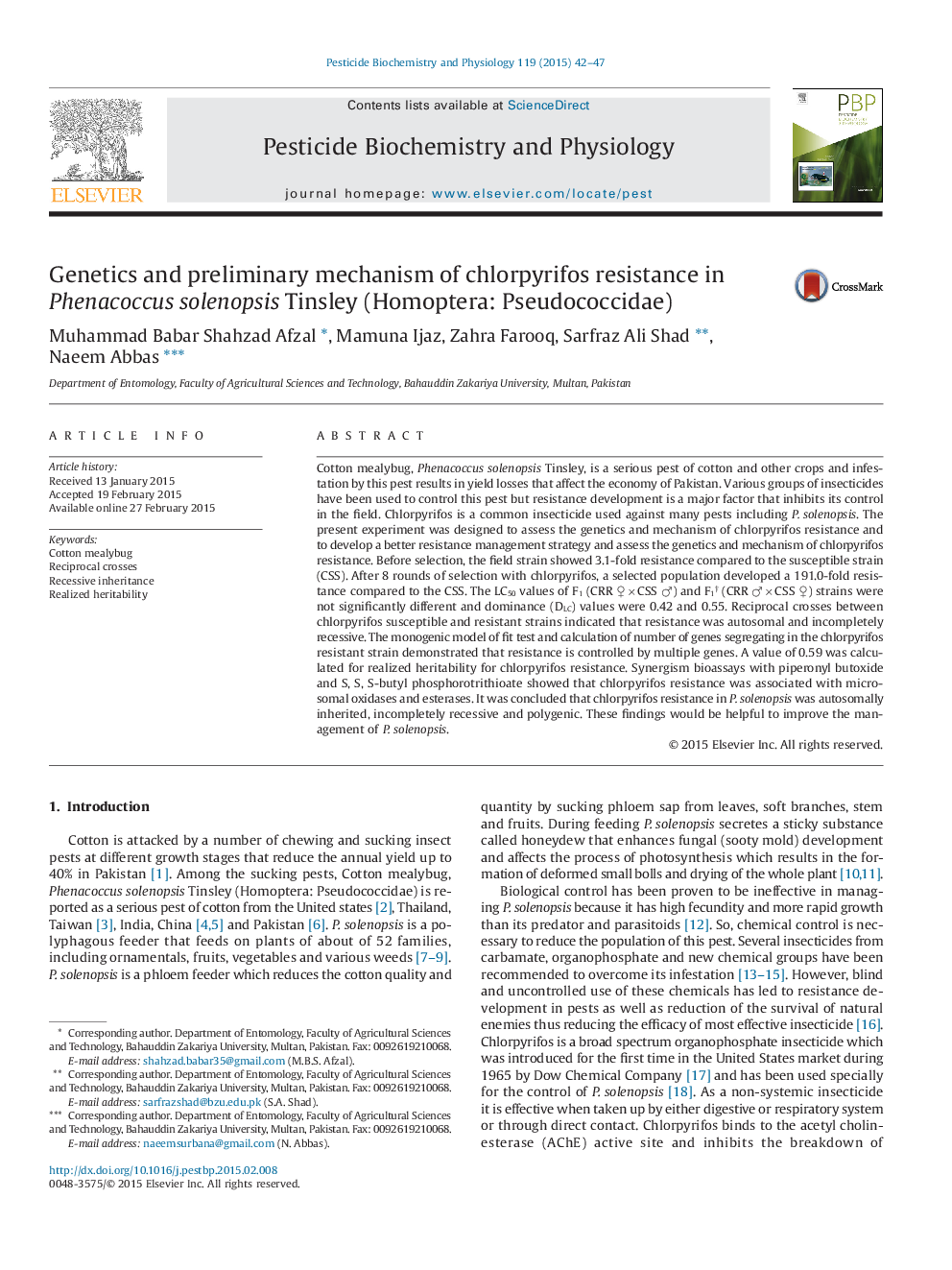| کد مقاله | کد نشریه | سال انتشار | مقاله انگلیسی | نسخه تمام متن |
|---|---|---|---|---|
| 2009145 | 1541780 | 2015 | 6 صفحه PDF | دانلود رایگان |

• After 8 generations of selection, a strain of Phenacoccus solenopsis developed 191-fold resistance to chlorpyrifos.
• Resistance to chlorpyrifos was autosomal, incompletely recessive and polygenic in the CRR strain of P. solenopsis.
• The realized heritability value was 0.59 in the CRR strain of P. solenopsis.
• The preliminary mechanism of chlorpyrifos resistance was microsomal oxidases and esterases.
Cotton mealybug, Phenacoccus solenopsis Tinsley, is a serious pest of cotton and other crops and infestation by this pest results in yield losses that affect the economy of Pakistan. Various groups of insecticides have been used to control this pest but resistance development is a major factor that inhibits its control in the field. Chlorpyrifos is a common insecticide used against many pests including P. solenopsis. The present experiment was designed to assess the genetics and mechanism of chlorpyrifos resistance and to develop a better resistance management strategy and assess the genetics and mechanism of chlorpyrifos resistance. Before selection, the field strain showed 3.1-fold resistance compared to the susceptible strain (CSS). After 8 rounds of selection with chlorpyrifos, a selected population developed a 191.0-fold resistance compared to the CSS. The LC50 values of F1 (CRR ♀ × CSS ♂) and F1† (CRR ♂ × CSS ♀) strains were not significantly different and dominance (DLC) values were 0.42 and 0.55. Reciprocal crosses between chlorpyrifos susceptible and resistant strains indicated that resistance was autosomal and incompletely recessive. The monogenic model of fit test and calculation of number of genes segregating in the chlorpyrifos resistant strain demonstrated that resistance is controlled by multiple genes. A value of 0.59 was calculated for realized heritability for chlorpyrifos resistance. Synergism bioassays with piperonyl butoxide and S, S, S-butyl phosphorotrithioate showed that chlorpyrifos resistance was associated with microsomal oxidases and esterases. It was concluded that chlorpyrifos resistance in P. solenopsis was autosomally inherited, incompletely recessive and polygenic. These findings would be helpful to improve the management of P. solenopsis.
Graphical AbstractFigure optionsDownload as PowerPoint slide
Journal: Pesticide Biochemistry and Physiology - Volume 119, March 2015, Pages 42–47